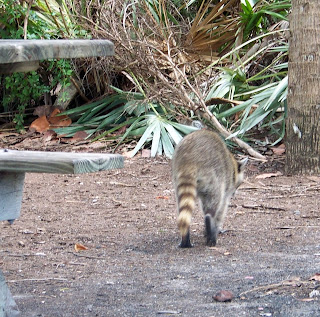



Leaving Bill Baggs Park on Key Biscayne, we came across this scene at one of the many barbecue/picnic sites. The lid was off the garbage can and this raccoon had hit pay dirt. It was only a few feet from us and not in the slightest bit inclined to leave its feast behind, despite our proximity. After a couple of minutes, it ambled back into the undergrowth.
Cute as it was, it's a sad state of affairs for several reasons: The ugly impact humans have on the environment, the loss of fear by wild animals, the danger raccoons pose to the human population. Raccoons are significant carriers of rabies, but unlike dogs and cats, they don't exhibit symptoms to alert us.


























.jpg)



